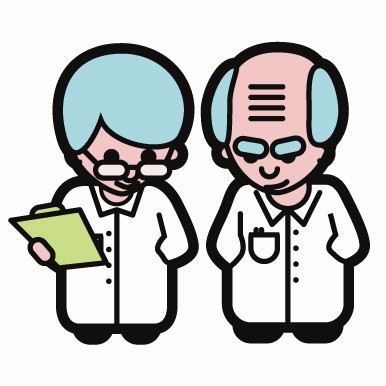
One could ask this question of several different people and get several different answers.

Insurance agent: “Now. You can potentially lock in the rate and you don’t have to worry about whether you will be insurable in the future. Something could happen to you today that might render you in need of long term care for the rest of your life.”
Financial publication X: “When you are 60. This is the time to start thinking about long term care expenses. Sure you could potentially lock your rates in at a lower rate if you buy it sooner, but you will be paying the premiums longer. The average stay in a facility only lasts 2.2 years anyway.” [note: any statistic meant to justify their position could have been inserted in that last sentence. I hear "2.2" more than any other.]
Financial publication Y: “Consider whether you really need it. Many people should self- insure this expense. Since the average stay is only 2.2 years, you should easily be able to weather the storm of these expenses. Paying premiums for many years to avoid only 2.2 years of expenses is a waste of money.”
Cass Chappell: “It depends.”
The insurance agent and the two financial publications have oversimplified the need and made some dangerous assumptions.
My belief is that there is no concrete answer to this question. No simple test that will give you the answer. However, there are four basic variables to consider:

1. Current Financial Situation
Charles wrote a great article about long term care insurance on November 10, 2008 http://atlantaplanningguys.com/?p=67 . His article discussed the different things to consider when you have decided to purchase the policy, such as what policy limits and elimination periods to consider. Even if you purchase a policy with a lifetime benefit, there is still some maximum amount that the policy could reasonably be expected to payout. Because of this, it REALLY IS POSSIBLE to self-insure against the costs of a long term care need. The number of people that fall into that category, however, is smaller than you might think.
Consider a couple with $2 million in savings. This is the sole source of their retirement savings. They are currently living on about $80,000 a year in withdrawals from their investment accounts. [Let's ignore ANY social security or pension payments that they might have coming in]. We subscribe to a withdrawal rate from a nest egg of about 4.5%. As you can see, this couple is already cutting it close. If a long term care event were to happen and an added expense of, say, $30,000 per year were added, this could be detrimental to their nest egg.
Self-insuring should be considered only when a nest egg is large enough to withstand withdrawals of 4.5% INCLUDING long term care expenses. In that situation, one might purchase the insurance ANYWAY (since the premiums are so small in relation to the nest egg).
2. Appetite for Risk
Many people live their lives and never need to pay for assistance. Many people who do pay for assistance only pay for a very short time (because they pass away after 2.2 years, remember?). Deciding to “roll the dice” and forego the purchase of an LTCI policy is something many Americans have decided to do (LTCI sales have recently slowed somewhat).
“It won’t happen to me.” “My mom and dad lived to 90….never any problems.”
I have heard every variation of the two statements above.
The worst excuse I have ever heard?
“If I need to someone to take care of me because I can’t do it myself, just shoot me.”
Believe it or not, I have heard that EXACT statement many times. I don’t really need to address what is wrong with that logic.
In all seriousness, you could take the risk of not purchasing the insurance. I would point out that the premiums are small compared to the devastating effects of a prolonged long term care event. Modern medicine is keeping people alive that would have died after a few years in the past. This trend is likely to continue, meaning that the chance of a prolonged, financially devastating, event will only grow larger. Just understand this risk before you take it………
3. Other Types of Insurance
You might have a disability policy that provided for benefit payments to age 65. Benefit payments are usually expressed as a percentage of income. For most people, this payment would be larger than the payments from an LTCI policy. Some policies allow for conversion to an LTCI policy at a stated age. If you fall into this category, you might consider delaying the purchase of an LTCI policy until either your disability policy terminated or your conversion period was set to expire.
4. Health Status
Buying insurance NOW does eliminate the risk that you may not be insurable in the future. With the exception of someone who has an insurance policy that allows for the guaranteed conversion to an LTCI policy, you ARE taking a risk that you may not be insurable in the future. Once you have been diagnosed with a cognitive impairment it is too late to get a policy. Once a degenerative bone condition has been diagnosed it is too late to get a policy. Once you have a stroke,…. ETC, ETC, ETC, ETC.
This is a REAL risk. In our experience, many people decide to purchase a policy simply because they are currently healthy and don’t want to risk being denied in the future.






























